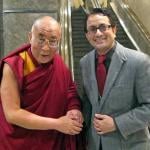
Continuing with The Manuscript:
Those agreements, signed at the American presidential retreat known as Camp David, included plans for Israel’s complete withdrawal from the Sinai Peninsula, which it had occupied in the 1967 war, and for a peace treaty between Israel and Egypt. The peace treaty was signed in 1979, and the Israelis completed their withdrawal from the Sinai in 1982. However, the Accords also called for a five-year period of self-rule, or autonomy, for the Palestinians of the West Bank and the Gaza Strip, after which a final decision would be made about the status of those two areas. But this did not happen (though current developments, begun only since the Israeli- PLO negotiations, may finally lead in that direction). Thus, it is understandable that many Palestinians saw the Camp David Accords as simply one more instance of being abandoned by an Arab state acting in its own self-interest. The Egyptians got a peace treaty, freeing them from the cycle of destructive wars that had drained their economy and killed their sons. They also got back the Sinai. They had long been bitter about what they saw as the disproportionate burden they had been obliged to bear in the struggle against Israel. The Saudis, the Iraqis, the Moroccans, and most other Arab nations were all too willing, as the Egyptians saw it, to fight the Israelis down to the last drop of Egyptian blood. They were relieved to get out of the endless cycle of wars and bloodshed. But what did the Palestinians get? As they see it, nothing. Harun Hashim Rashid speaks for many of his people:
Palestinian—
The name pursues me, lives with me;
Palestinian is my fate,
Clinging to me, reviving me.
Palestinian I am,
Though they trample me and my name;
Palestinian I am,
Though they betray me and my cause;
Palestinian I am,
Though they sell me in the market
For what they please,
For thousands of millions;
Palestinian I am,
Though to the gallows they drive me;
Palestinian I am,
Though to the walls they bind me …
Without my name, Palestinian,
Without a homeland to live for,
To protect and be protected by:
I—what am I?
Answer me, answer me! [1]
[1] From his poem “Palestinian,” translated in Khouri and Algar, An Anthology of Modern Arabic Poetry, 231-33.
Posted from Cairo, Egypt










